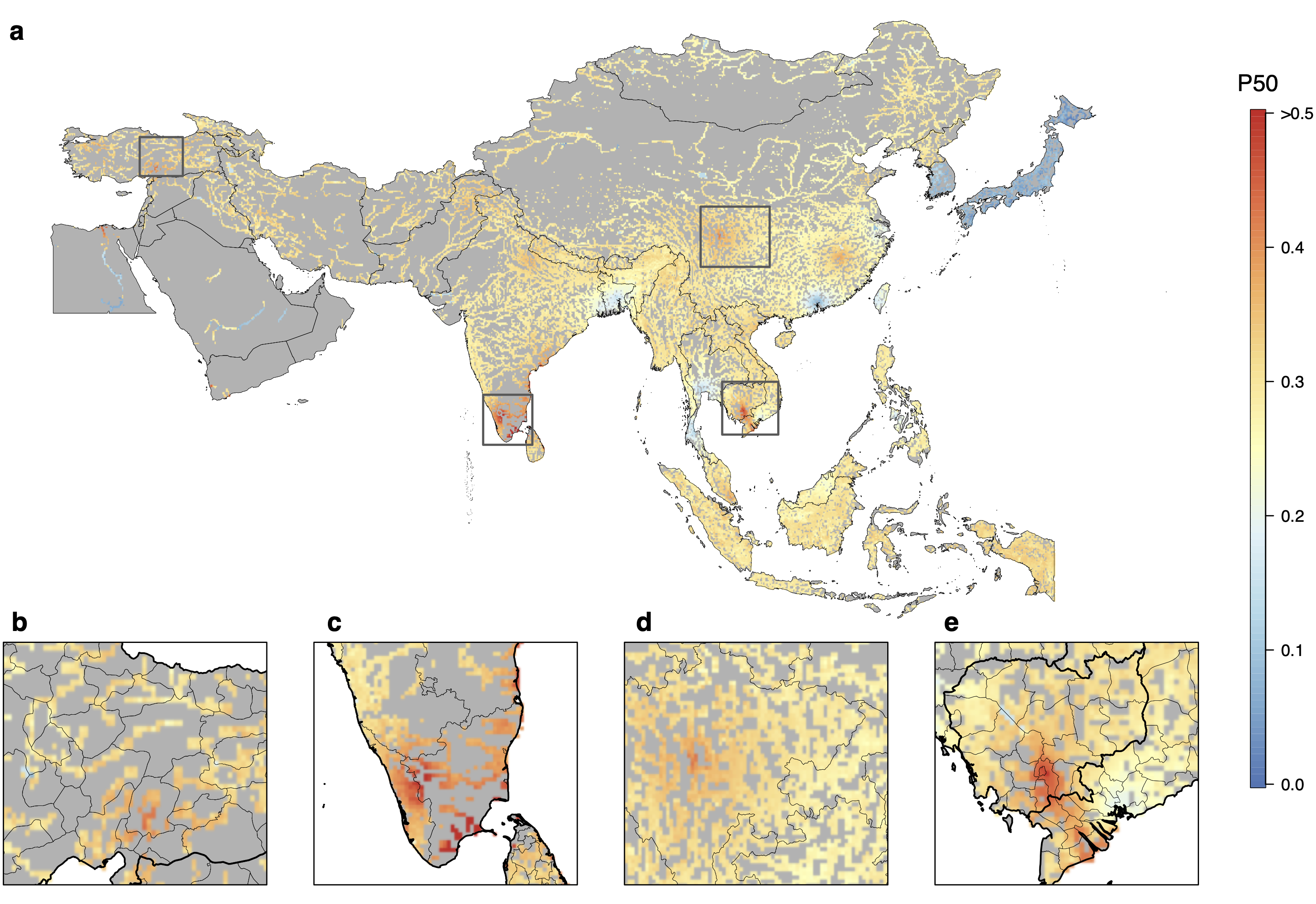New research on the distribution of antimicrobial resistance from Asia's aquaculture and fisheries industry
Published on September 15, 2021, by Dan Schar
Antibiotic-resistant bacteria are on the rise globally, threatening animal and human health. The aquaculture and fisheries industry is experiencing rapid growth–with aquatic animals now the fastest growing food animal sector globally. Yet, antimicrobial resistance (AMR) in aquatic animals destined for human consumption is seldom documented, limiting the application of targeted interventions. Addressing this gap, we reviewed current evidence on AMR in farmed and wild-caught aquatic food animals over two decades in Asia, the world’s most productive aquaculture and fisheries region. Our systematic review identified 749 point prevalence surveys of antimicrobial resistance from aquatic food animals in Asia between 2000 and 2019. The resulting dataset, comprising 12,698 individual pathogen-drug resistance rates, was used to establish a baseline of multi-drug resistance and map resistance in freshwater and marine systems. We found elevated levels of multi-drug resistance (33%) are already present in farmed aquatic animals intended for human consumption. By contrast, multi-drug resistance from wild-caught animals decreased sharply between 2000 and 2019 (52% to 22%), although data from capture fisheries were scarce, and additional work is needed to document resistance trends and influencing factors in wild-caught fish. Concerning levels of resistance to medically important antimicrobials were identified in foodborne pathogens. Our spatial analysis revealed that hotspots of AMR correspond to areas experiencing rapid aquaculture and fisheries growth. We further identified central and eastern China; the western and central regions of India, and along the Indo-Gangetic Plain; and Indonesia as areas that would benefit most from increased surveillance efforts. The research contributes to the broader picture of resistance in bacteria from aquatic food animals, providing an initial assessment of the geographic distribution of resistance hotspots from aquatic animals entering the human food supply. Taken together, the results suggest that aquatic food animal production may serve as an under-appreciated route for transmission of antimicrobial resistant bacteria from aquatic animals and their environment to humans. Read the whole study here.

Reference: Schar D, Zhao C, Wang Y, Larsson DGJ, Gilbert M, Van Boeckel TP (2021). Twenty-year trends in antimicrobial resistance from aquaculture and fisheries in Asia. Nature Communications 12: 5384